Unlock Your Seasonal Color Palette | A Guide to Color Analysis

Seasonal color analysis is a system for determining which colors best complement an individual's skin, hair and eyes by categorizing them into one of the four seasons—spring, summer, autumn and winter.
Each season has its own shades that can make someone appear more vibrant or harmonious. It simplifies selecting clothes and makeup.
To maximize it, your season is a good place to start.
Key Takeaways
- Seasonal color analysis helps you find colors that make your natural beauty pop, allowing you to easily select clothing, accessories and makeup that flatter you.
- When you know your skintone undertone, hair and eye color, you can discover your own palette to boost your confidence and simplify your style choices.
- Four seasons and twelve sub-seasons, to be exact, so it's a highly tailored system that works for every complexion, every background, every feature.
- Because lighting plays a roll in trying on new colors, always test shades in natural daylight to get the best results.
- Fluidity is welcome—the rules provide a framework, but personal preference and individuality play just as much of a role in curating your closet.
- Still, there's magic in dressing in colors that just make you feel good—and that can affect your mood, your confidence, even your personal brand—so seasonal color analysis is a great tool no matter what.
What is Seasonal Color Analysis?
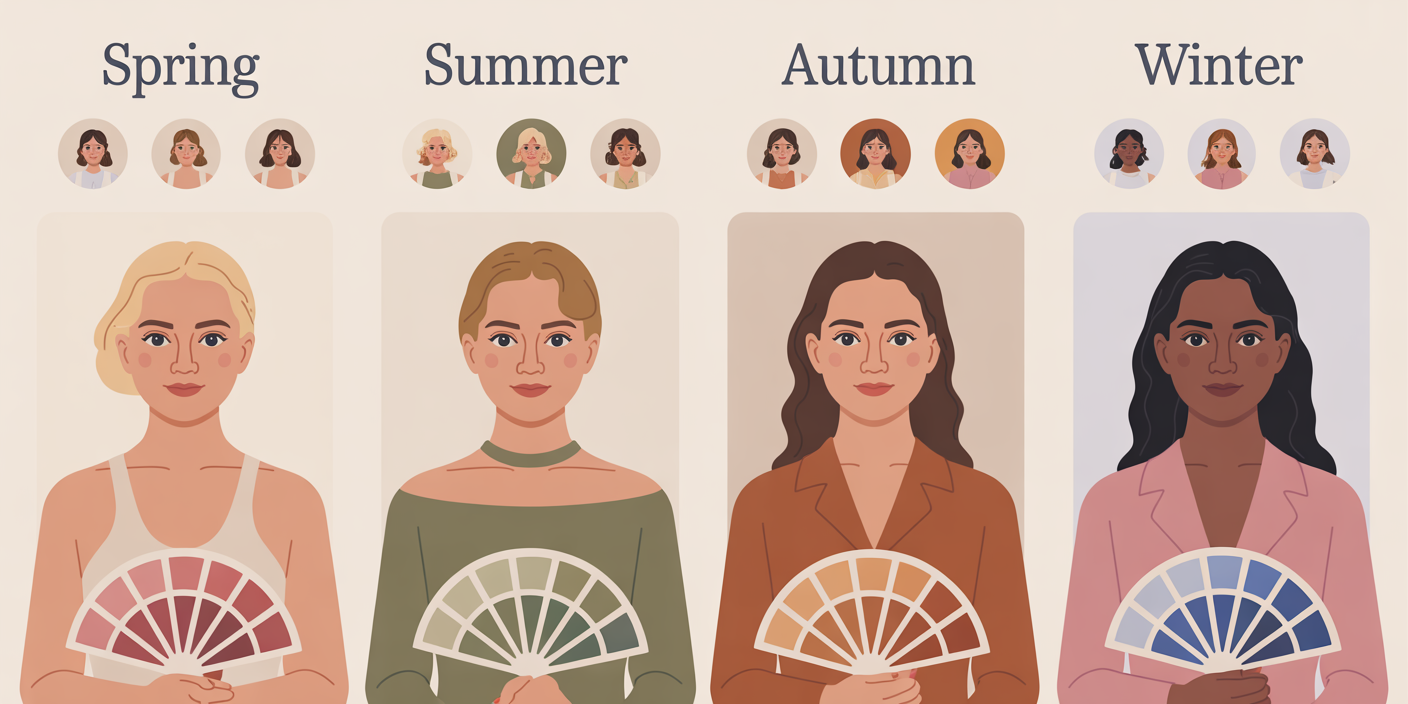
Seasonal color analysis is a system for discovering the optimal colors for you to wear according to your skin, hair and eyes. It aligns you with a palette of colors, referred as your "season," that enhance your natural allure and make you appear more radiant.
The analysis is about more than just selecting preferred hues. It applies color theory to your features and helps you craft a closet that suits! Knowing your palette can simplify shopping and styling, plus it's a confidence booster to know you're wearing clothes and makeup that naturally suit you.
1. The Core Idea
The premise is mapping your inherent colors to particular hues and intensities that complement you. Color theory drives this, connecting skin undertones, hair depth, and eye brightness to a palette.
When you wear these hues, your features appear more harmonized and your skin radiates. Wearing the proper hues has a huge impact on your appearance and confidence.
For instance, a person with light hair, fair skin, and blue eyes may discover that soft pastels or cool blues enhance their natural brightness but deep, warm colors drain them. Experimenting with shades that complement your coloring can make ensembles seem more unified and provide you with a distinct fashion persona.
2. The Three Dimensions
Seasonal color analysis uses three main ideas: temperature (warm or cool), value (light or dark), and chroma (muted or bright). Temperature indicates whether your undertones are more golden or rosy.
Cool types are best in blue-based colors and warm types shine in yellow-based shades. Value helps determine if you are best in light or dark colors.
Individuals with darker coloring frequently appear more powerful in deeper hues, whereas individuals with lighter coloring radiate in softer shades. Chroma is whether a color is bright or soft.
High-chroma individuals can sport vivid, bright hues. Some require more subdued, soft colors to rock the flattering boat.
3. The Four Seasons
They each have subcategories, but the four main palettes—Spring, Summer, Autumn, and Winter—correspond to grouping people by these traits. Spring's colors are warm and clear, like new grass and daffodils.
Summer is cool and soft, like faded denim or lavender. Autumn's color is warm and deep, abundant in earthy reds and golds. Winter colors are cool and clear, like snowy white or true black.
Each season corresponds to specific undertones and its own combination of lightness and depth. This 'season' is not a hard rule, but rather a handy shortcut to identifying what suits you.
4. The Twelve Sub-Seasons
There are three sub-seasons under each season, so twelve in all. These provide an even more precise match for those who don't fall squarely into the classic categories.
For instance, a "Light Spring" suits those with lighter coloring, whereas "Deep Winter" is great for high contrast, such as dark hair with blue eyes. With such variety, just about anyone can discover a palette that matches his or her individual blend.
Digging into sub-seasons assists if you're in-between seasons or desire a more specific guide for selecting colors. Experimenting with sub-season palettes can provide style precision and open your eyes to new possibilities.
5. Beyond the Rules
Seasonal color analysis is a tool, not a bible. Personal taste matters and sometimes a favorite color just feels right even if it's not in your palette.
Try, try, try — that's what it's all about. Experimenting with new colors can provide both surprises and assistance in crafting a style that resonates your personality.
Utilize color analysis as an avenue for expansion, not restriction. Wear what makes you happy.
Discover Your Color Identity
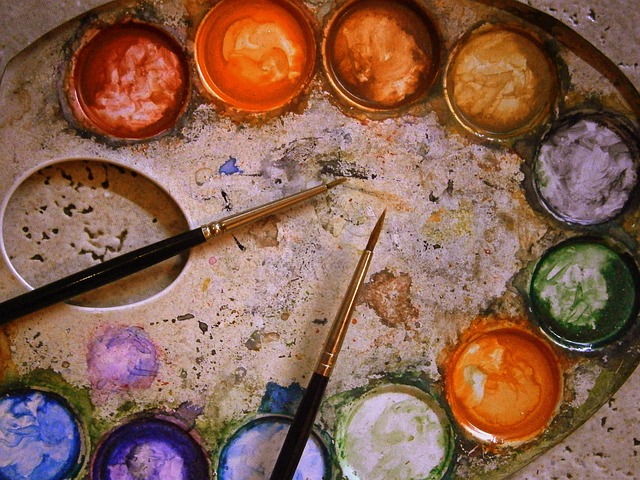
Seasonal color analysis guides people in discovering the colors that best complement their natural coloring—skin, eyes, and hair. It sprouted from Carole Jackson's Color Me Beautiful in the 1980s and now deploys more refined instruments. The idea is to shove yourself into one of four color palettes—Spring, Summer, Autumn, or Winter—so you can construct a wardrobe and aesthetic that "feels" right.
Once you know your color identity, you can select outfits that enhance both mood and confidence, in addition to simplifying shopping.
Skin Undertone
Skin undertone is the engine of color analysis. It lies below the surface of the skin and is immune to sun or age.
Warm undertones appear golden or peachy, cool undertones suggest blue or pink. Neutral undertones fall somewhere in the middle, making it difficult to discern. Your skin, hair, and eye colors all emanate from this undertone, so identifying it lays the foundation for all subsequent steps.
For instance, warm undertones typically glow in earthy hues like olive or rust, while cool undertones sizzle in crisp jewel tones.
- Check veins: Greenish veins mean warm undertones, blue veins mean cool.
- Hold up gold and silver jewelry: Gold flatters warm, silver flatters cool.
- Place white paper next to your face: Yellow tint means warm, pink or blue means cool.
- Notice sun reaction: Tan easily means warm, burn means cool.
Understanding your undertone allows you to bypass the guesswork when selecting everything from apparel to cosmetics.
Discover Your Best Colors Instantly!
Take our quick, free color analysis quiz and get your personalized palette in minutes.
Take the QuizHair and Eyes
It's hair and eye colors that really complete the process and make a huge difference. Along with skin, they form your unique palette.
Natural hair color, be it blonde, brown, black, or red, teamed with eye color, establishes the tone. Maybe a brunette with hazel colored eyes would be Autumn. That ashy blonde hair and gray-blue eyes are often Summer. It's the combination of all three attributes that counts.
Play with your wild coloring to begin with. It prevents mix-up should you later dye your hair or pop in some colored contacts. Hair and eyes tend to lead you to palettes that flatter and make you feel the most fab.
The Drape Test
- Second, stand by a window with light streaming in, bright yet not harsh.
- Drape various colors of fabric under your chin, one at a time.
- Note your skin—does it appear radiant or sallow, vigorous or fatigued?
- Experiment with warm and cool, light and dark to find what most flatters you.
Swatches allow you to witness tangible results on your face, not just paper or screens. The right colors even smooth out skin, brighten eyes, and add a healthy glow.
Never utilize any artificial lighting as it may cause color shifts. The cool thing about this test is that it's all about witnessing change in real time, so experiment with as many colors as possible.
Digital Pitfalls
Online tools are convenient, but colors appear differently on screen than in real life.
Apps and filters can misread undertone or make skin look cooler or warmer than it is. Professional advice is still best for accuracy.
Sample both virtual and face-to-face tests for authentic, comprehensive findings.
The Four Seasonal Palettes
Seasonal color analysis divides people into four seasonal color families—Spring, Summer, Autumn, and Winter. These palettes date back to how 19th-century painters interpreted light and the colors of nature. There's a defined range of shades in each palette that can impart a more alive look to skin, eyes and hair.
Not all of us fit neatly into one box. Occasionally, you'll fall between palettes and the technique has even expanded into a 12-season system for additional choices. Really though, the four main palettes endure. Knowing your palette can help you choose clothes that complement one another and present your best self. Each palette adds its own mood and flair to individual style.
- Winter: Cool, clear, bold, high contrast, elegant, dramatic
- Spring: Warm, bright, clear, lively, fresh, youthful
- Summer: Cool, soft, muted, gentle, calm, understated
- Autumn: Warm, rich, earthy, deep, cozy, inviting
Winter's Essence
Winter tones are bold, cool, and crisp—like ice, snow and midnight skies. Black, white, icy blues, true reds and jewel tones like emerald and sapphire reign in this palette. These tones flatter those with cool undertones and high hair-to-skin contrast.
Whether it's a sharp black suit with a white shirt or a rich blue scarf accessorizing a gray coat, winter types shine in these hues. Jewel-toned dresses or crisp white shirts pack polish and drama. Winter hues tend to make you look crisper and more polished— even in simple ensembles.
Spring's Essence
Spring's palette is warm, bright, and vibrant. Peach, lilac, warm yellows, soft corals and light greens all fit in this category. These colors play nicely with warm undertones and lighter hair.
A peach blouse or a light green dress can illuminate the face and give you a more alert appearance. These spring colors are easy to wear in real life–soft yellow scarves, pastel shirts, a light blue jacket. Combining these hues brings happiness and newness.
The colors of spring inject cheer and spark, even into a basic tee or sundress.
Summer's Essence
Summer palettes rely on soft, cool, muted shades. Think pastel blues and soft pinks, dusty rose, lavender and muted greens all work well here. Cool undertoned fair features often glow in these soft hues.
A powder blue shirt or rose scarf can soothe the appearance and complement the gentle ambiance of the season. Light-wash denim and understated blouses are effortless ways to inject summer into everyday dressing.
Layering on different pastels adds interest without too much contrast. The summer palette keeps things looking cool and breezy – great for laidback days.
Autumn's Essence
Fall colors are warm and deep and earthy. Rust, mustard, deep burgundy, olive and teal take center stage. These colors work with warm undertones and typically darker hair.
An olive sweater with rust pants or a teal scarf with a tan coat screams fall's abundance. Stacking browns, golds and reds, you've got an autumn story going on, quick.
Beyond the Four Seasons
Seasonal color analysis has moved beyond the basic four seasons, considering the vast variety of skin tones, undertones and individualities throughout the world. As more and more find themselves outside these old boxes, specialists are seeking systems that accommodate real-world variation.
Diverse Complexions
No two individuals share the same skin tone or undertone. Warm, cool, neutral, olive—undertones are a diverse group, and the skin's top hue may change with sun, hormones or time.
About 60% of people are mixed (so it's hard to call them a "spring" or "autumn" type). Even the 12- or 16-season systems, which mix chroma and depth, occasionally miss for the 25% who fall outside any group.
Color analysis is now about all complexions. Some color consultants drape fabric or use digital tools to match shades to skin. There's extra attention paid to the face-framing zone (the 30-centimeter ring that surrounds the face), as it's where colors make the most impression.
If you're looking for direction, online resources and books with various templates can assist.
Tonal vs. Seasonal
Seasonal analysis categorizes individuals on the basis of how their skin, eyes and hair react to warm or cool, light or dark, clear or muted colors.
Tonal analysis, meanwhile, bypasses the labels and goes right to the actual shades that flatter most—e.g. Deep, cool blue" or "soft, warm beige"—season be damned.
With both approaches under your belt, it's easier to see what works for you. I.e. A person might possess the depth of a winter but the warmth of an autumn.
As you explore both ways of doing things, you can begin to view yourself out of old boxes, constructing instead a palette that feels right, regardless of which label works.
The Impact of Light
Lighting makes all the difference. A shirt that shines in the morning sun could appear drab beneath harsh store lights.
Daylight provides the most accurate color match for your skin, but the majority of us dwell beneath hybrid bulbs and variable skies. Color doing under artificial illumination can skew results.
Experiment with color swatches by a window, then walk into another room. You might find your best shades change.
Try your picks in various lights for actual use.
Adapting with Age
Hair color, skin tone and undertones shift as we age. Reset your color palette every couple of years.
A color that used to work might now clash or wash you out. It's common to change palettes as your features evolve.
Fashion is an instrument of self-expression. Experiment with scarves or tops in new hues as your coloring changes.
Always let your current self guide your color choices.
The Psychology of Color

Color influences how we feel, think and behave on a daily basis. It influences mood, influences others' perception of us, and even how we perceive ourselves. Seasonal color analysis helps us match our best colors to our own features, making these small daily choices feel lighter and more meaningful.
Confidence Boost
When people wear colors that complement their natural tone, it can make them feel more confident. A gentle pastel yellow may buoy the soul and generate optimism, whereas a rich green can ground you in the earth and inspire rejuvenation. For most people, the magic color is like armor — it makes them feel invincible.
Namescapes and color decisions tie directly back to feeling empowered. We all have those colors that provide a boost—think of a trusty red scarf for courage in front of a tough meeting or a soothing lavender blouse for crazy days.
Experimenting with colors can be a simple method to discover what works. One may grab blue and grey for a meeting, feeling calm and in control, while another selects bright pink on a rough day to alter her mood. The connection between color and mood and behavior is real and personal.
Simplified Shopping
- Discover your seasonal palette by observing your skin tone, eye, and hair color.
- List the core colors in your palette—these are your staples!
- When you shop, cross items off your palette and bypass what doesn't.
- Construct your closet around these shades for effortless coordination.
- Carry a mini shopping list with your top shades!
Selecting clothing colors that complement your coloring saves you both time and money. No more hunting or impulse purchases that end up with tags still attached. A well-matched palette means that everything works together, so getting dressed is easy.
A seasonal color plan eliminates junk and makes people concentrate on what suits them. It makes it simpler to see what's missing and therefore better choices. Your very own color-centric shopping list can reduce waste and increase your confidence every time you choose an outfit.
Personal Branding
Color is a huge component of creating an impression — in the professional world and in social circles. Regular color selections assist other individuals recall you and can create the atmosphere you want to display.
A consistent blue and grey dresser like me reads collected and steady, but someone who peppers in bold reds or soothing lavender communicates innovative or cool. Sync your wardrobe colors with a pro image establishes trust.
Color psychology allows you to express your brand's values — blue for trust, green for growth or red for energy. These decisions communicate before you even say a word.
Cultural Meanings
Colors signify different things in different cultures. White may represent purity somewhere but be donned for grief elsewhere. Green is holy for some, red is good luck or too aggressive in certain offices. Lavender is soothing and virtually classic everywhere.
These personal color affinities often stem from culture, skin tone, or even how a color FEELS or SOUNDS or TASTES. These associations are instinctual, and recognizing them can make people more comfortable in their decisions.
Build Your Perfect Wardrobe
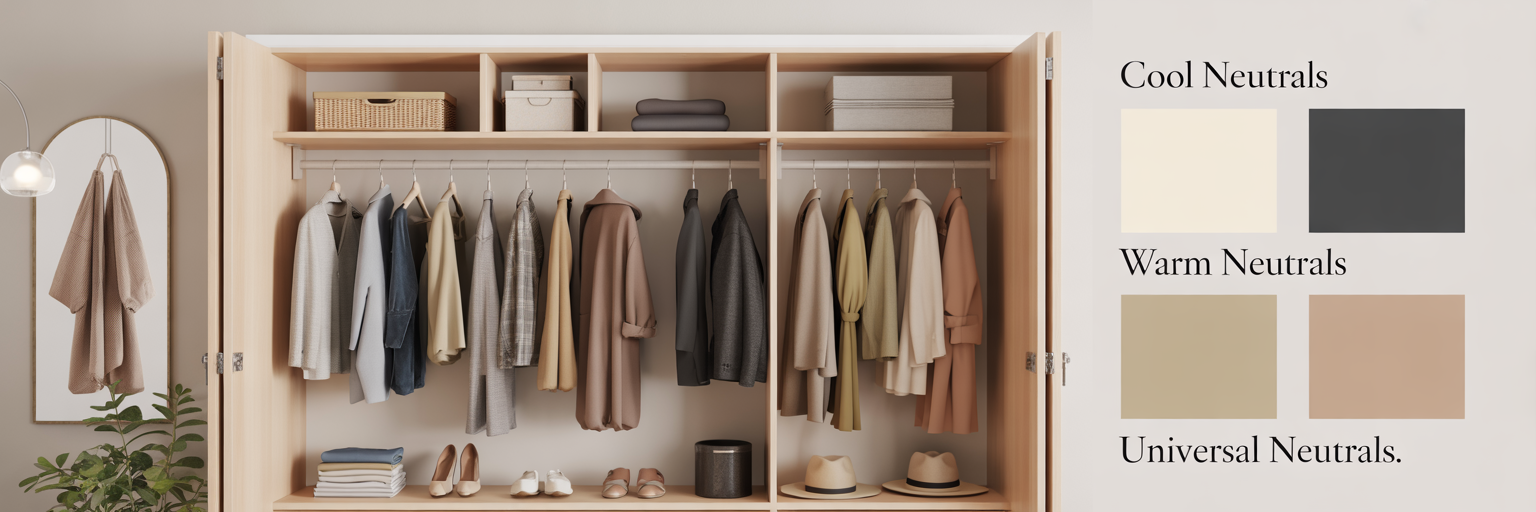
If you haven't already, build your wardrobe around your seasonal color analysis — a smart way to simplify getting dressed, increase your confidence, and decrease closet clutter. By selecting pieces that coordinate with your optimal color palette, you build outfits that flatter you all season and maximize your wardrobe.
Core Neutrals
Season |
Cool Neutrals |
Warm Neutrals |
Universal Neutrals |
|---|---|---|---|
Winter |
Charcoal, Black |
Taupe |
Navy |
Summer |
Soft gray |
Stone |
Dove gray |
Autumn |
Olive, Chocolate |
Camel, Cream |
Deep navy |
Spring |
Light beige |
Warm tan |
Ivory |
Core neutrals, like navy, dove gray or camel, are building blocks for any wardrobe. These shades just go well with most colors and look great on a ton of people, regardless of their undertone. By having these core neutrals, you mix and match more, wear pieces for different events, and roll with trends without constantly purchasing new items.
Consider a navy blazer, stone trousers or basic camel sweater—they suit tons of different palettes and can ground louder pieces without competing. To maximize your closet, select neutrals that complement your coloring. If you have cool undertones, soft grays or charcoal may look best. For warm undertones, go for cream or camel.
These hues become the backdrop of your ensembles and maintain your wardrobe vibe grounded, not cluttered. Neutrals act as a nice buffer to mute loud prints or bright accessories so that nothing feels too off balance.
Accent Colors
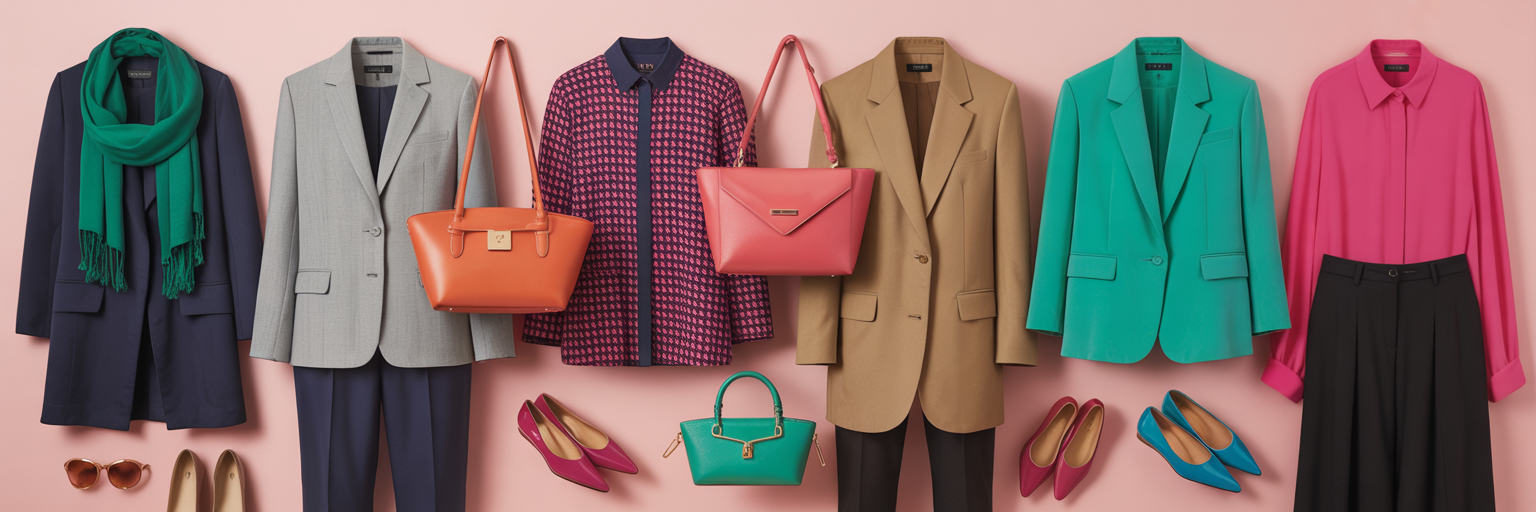
Accent colors make outfits pop and show off your personality. Selecting the appropriate pops of color can enhance your appearance, boost your confidence, and bind your style. Aim to have your accent colors represent about 30-40% of your wardrobe with neutrals being the balance so that things mix easily.
Begin with accent shades that complement your core neutrals. For instance, if your foundation is navy and stone, experiment with emerald green or berry for winter palettes, or coral and turquoise for spring. Accent pieces can be scarves, tops, bags or even shoes–little touches with a big effect.
Textcure and finish of fabrics also count– a silk turquoise scarf gleams differently than a cotton one. If you're a color junkie, go bold! Try a statement jacket or a bright skirt that suits your palette. Over time, you'll discover the colors that brighten your mood and bring compliments.
Makeup Harmony
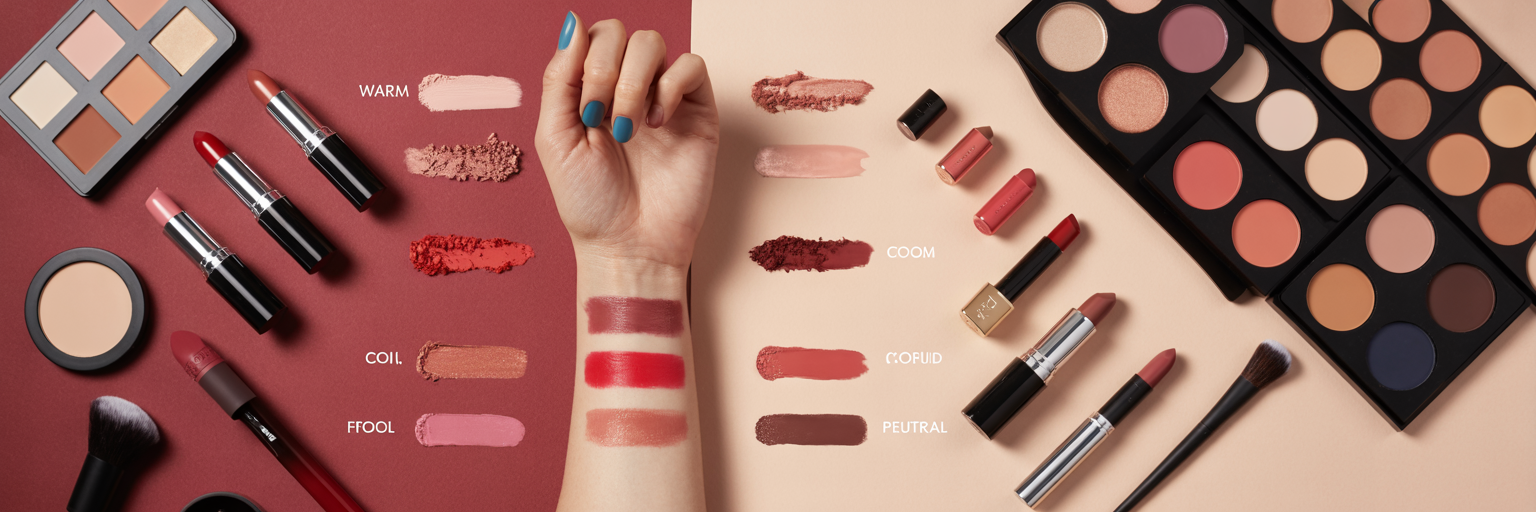
Key for a pulled-together look? Matching your makeup to your personal palette. Lipsticks, blushes and shadows that reflect your best clothing colors enhance your eyes and skin tone. A berry lip on a cool undertone or peach blush for a warm undertone can really light up your face.
When you pick makeup that goes with your season, outfits look more deliberate and your features look more wow. Try makeup on in daylight, as color can change in artificial lighting. You can always swatch foundation and lipstick shades on your wrist and see how they look outside.
Integrating Trends
Fashion finds can revitalize your wardrobe, but choose shapes that complement your color scheme. If this year's color is lime green and it really doesn't suit you, go for a lime bag or belt instead of a full outfit. Let trends be an accent, not the entire narrative.
Letting a trendy print scarf or on-trend jewelry play with your tried-and-true neutrals and accent colors keeps you fresh without sacrificing you. Because a wardrobe built on your best colors can make even bold trends feel more wearable.
Conclusion
Seasonal color analysis makes style easy and invigorating. Discovering your optimal colors makes who you truly are shine through — not only your wardrobe, but your spirits as well. Experiment with a grab-you-fresh blue shirt or a gentle-peach scarf–notice how skin glows. Even a tee in the right shade, plain, feels special. A lot of us discover new aspects about ourselves simply by choosing colors that complement us. So wardrobe decisions become simpler, which saves both time and stress. Small changes make a huge impact. Friends may notice the difference initially. Experiment by swapping a single item from your closet — see what changes. Style is supposed to be effortless and enjoyable! Take a chance on a new hue next time you shop and see daily outfits pop to life.
Frequently Asked Questions
What is seasonal color analysis?
Seasonal color analysis essentially is a way to find out which colors look best with your natural skin tone, hair and eye color. It categorizes individuals into color 'seasons' of four types for improved wardrobe and cosmetic selections.
How can I find my color season?
Here's how to discover your color season based on skin undertone and natural hair and eye color. Most color consultants are available for consultations, but there are online quizzes and self-analysis guides.
What are the four seasonal palettes?
These are the four seasonal palettes: Spring, Summer, Autumn and Winter. Each palette includes colors that resonate with that season's characteristics, making you look cohesive and radiant.
Can I belong to more than one season?
Others are "neutral" and can wear colors from multiple seasons. Generally do best with one primary palette.
Why does color analysis matter for my wardrobe?
When you wear colors that suit your season, you improve your natural beauty, increase your confidence and make shopping easier. It assists you in developing a streamlined wardrobe that compliments you.
Does seasonal color analysis apply globally?
Yes, seasonal color analysis takes into account all skin tones and backgrounds. It is based on undertones and natural coloring, not ethnicity or location.
How does color affect mood and perception?
Colors impact mood and perception. Again, for example, blue can feel calming, while red is energizing. Knowing which colors to wear can make an impact on both your self-confidence and your style.